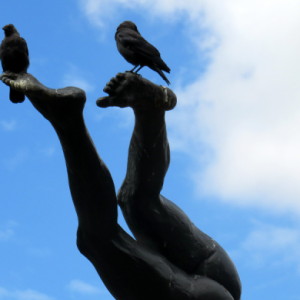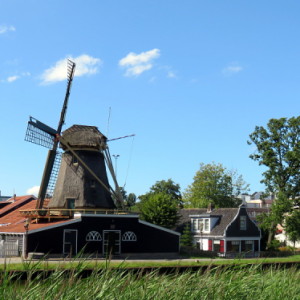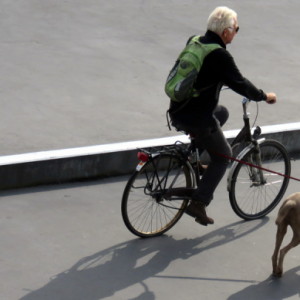City of bikes
While my companion was photographing the Spanish civil war memorial I took pictures of the cyclists pedalling along a canal-side avenue in north Amsterdam. A brief ferry crossing was needed to reach this part of the city where a major canal flows through a green corridor, the waterside colonised here and there by summer boat people whose relaxed lifestyle spreads on to the bank with a clutter of chairs, bikes, dogs and barbecues marking each mooring. Further along we found a working windmill dated 1792 and still occasionally used for grinding chalk.
These shots, all taken in the same place apart from the thumbnail, give some idea of the range of people who use bikes as naturally as drawing breath. It doesn't include the mothers with tiny babies slung on their chests, parents with tots in seats mounted fore or aft, infants travelling in attached wooden carts, young people with friends perched casually across the frame, workers ferrying equipment or deliveries in trolleys - and so on. Noticeable is the fact that no-one wears a helmet and very few are overweight - there is virtually no obesity to be seen here.
Although I don't know him personally I've been staying in the home of the main historian of Netherlands bicycle culture, Pete Jordan, whose book In the City of Bikes is a terrific read and a genuine eye-opener regarding the war-time significance of bicycles in this country. Guinea Pig Zero has blipped him here and I couldn't recommended his book too highly - even if bikes aren't your thing.. It shows how an oppressed but nimble population, using cunning, resourcefulness and know-how were able to outwit their more powerful but clumsier enemy across the board: a triumph of two wheels over four.
Extras: birds on the memorial, the windmill, the man and his dog
NB My blips for this day and the next are the wrong way around but I can't seem to swop them - never mind, it's late already.




Comments
Sign in or get an account to comment.


